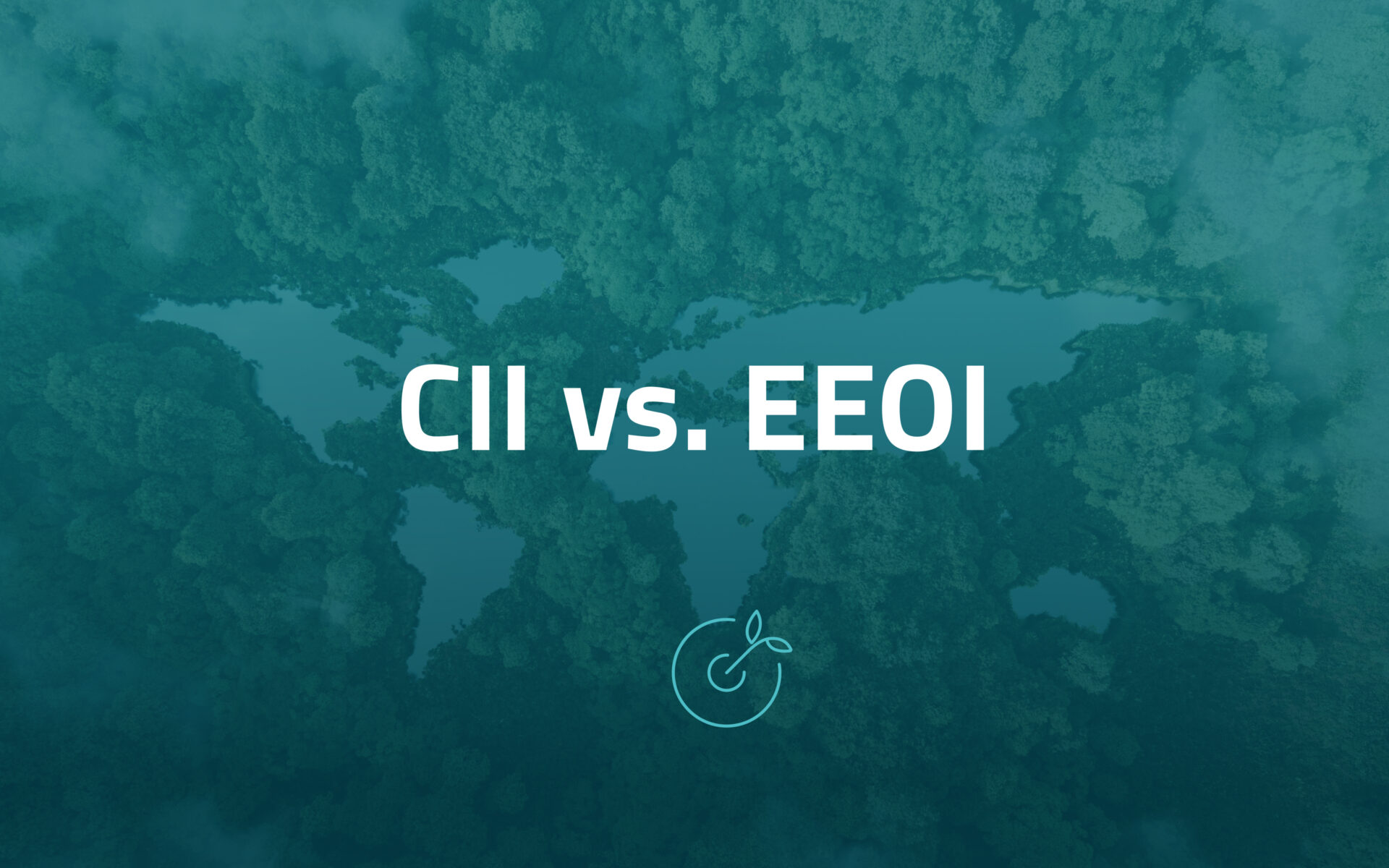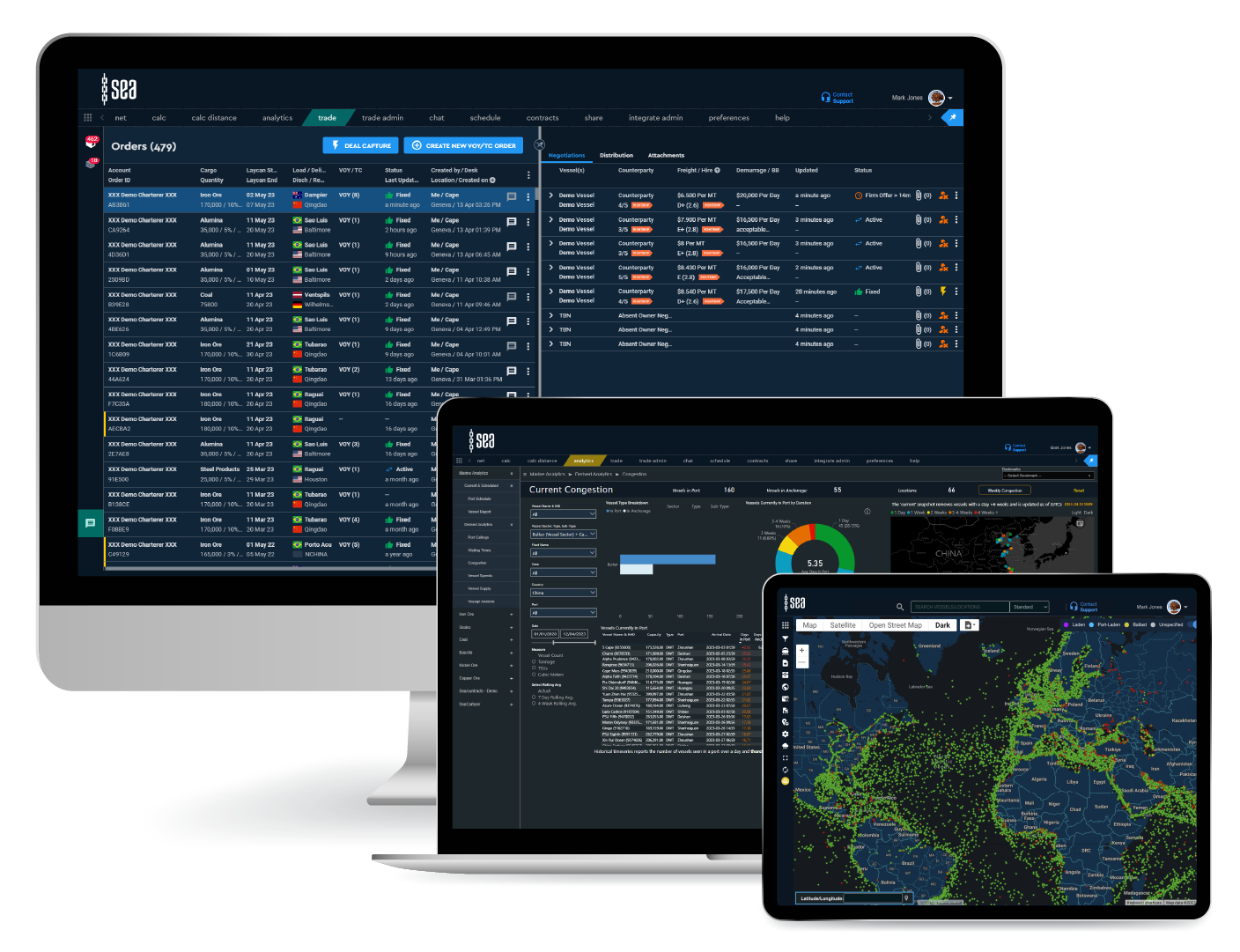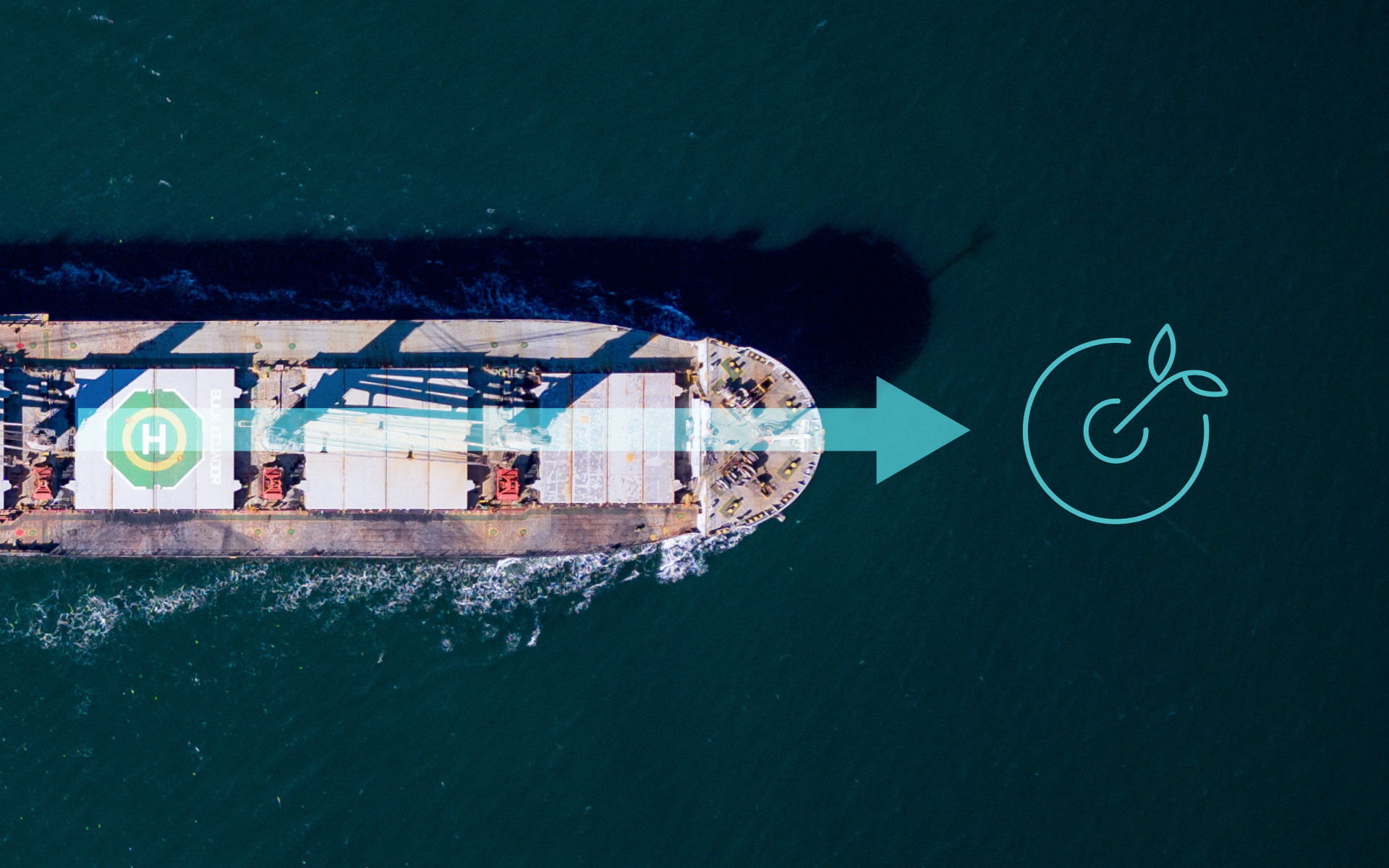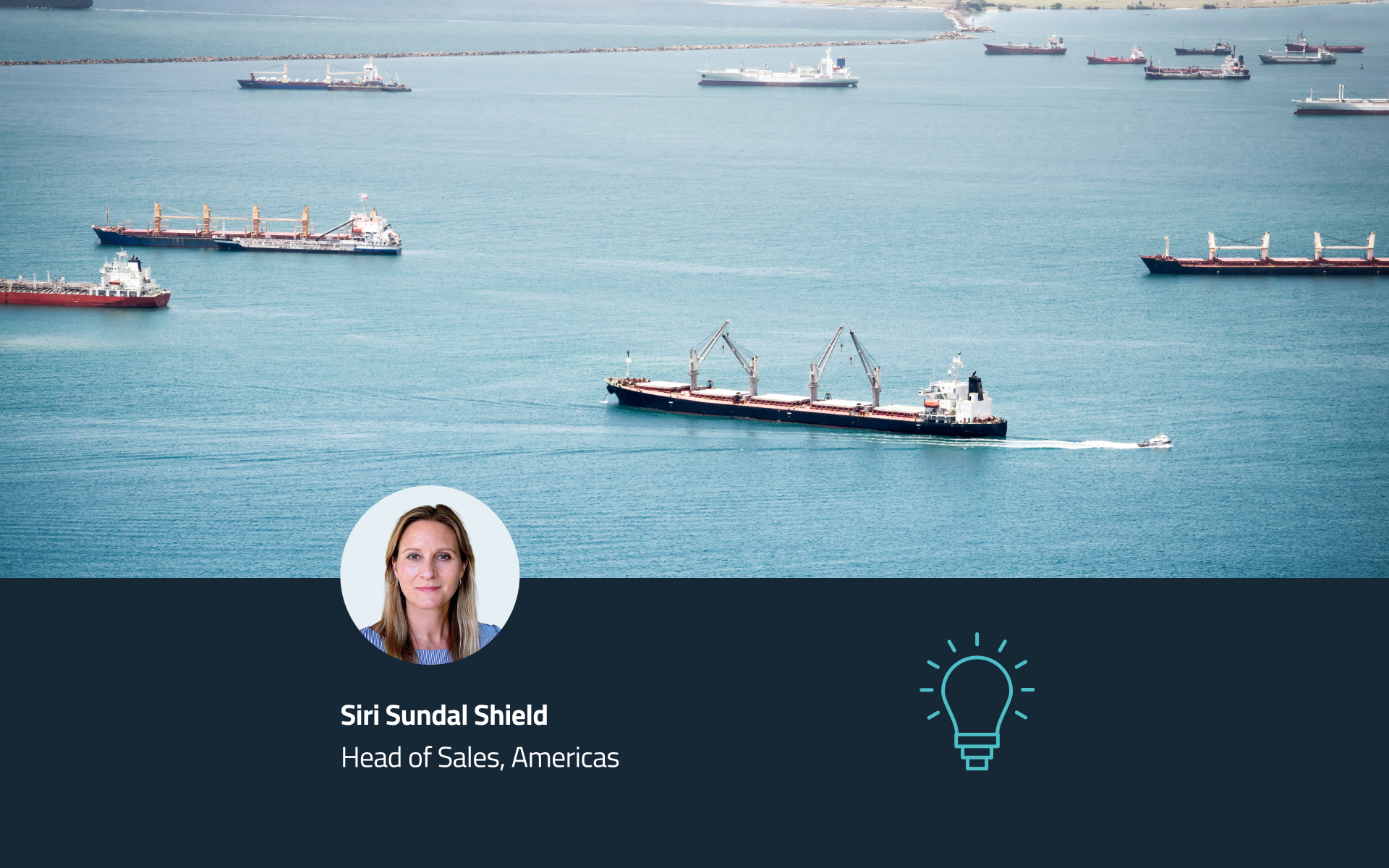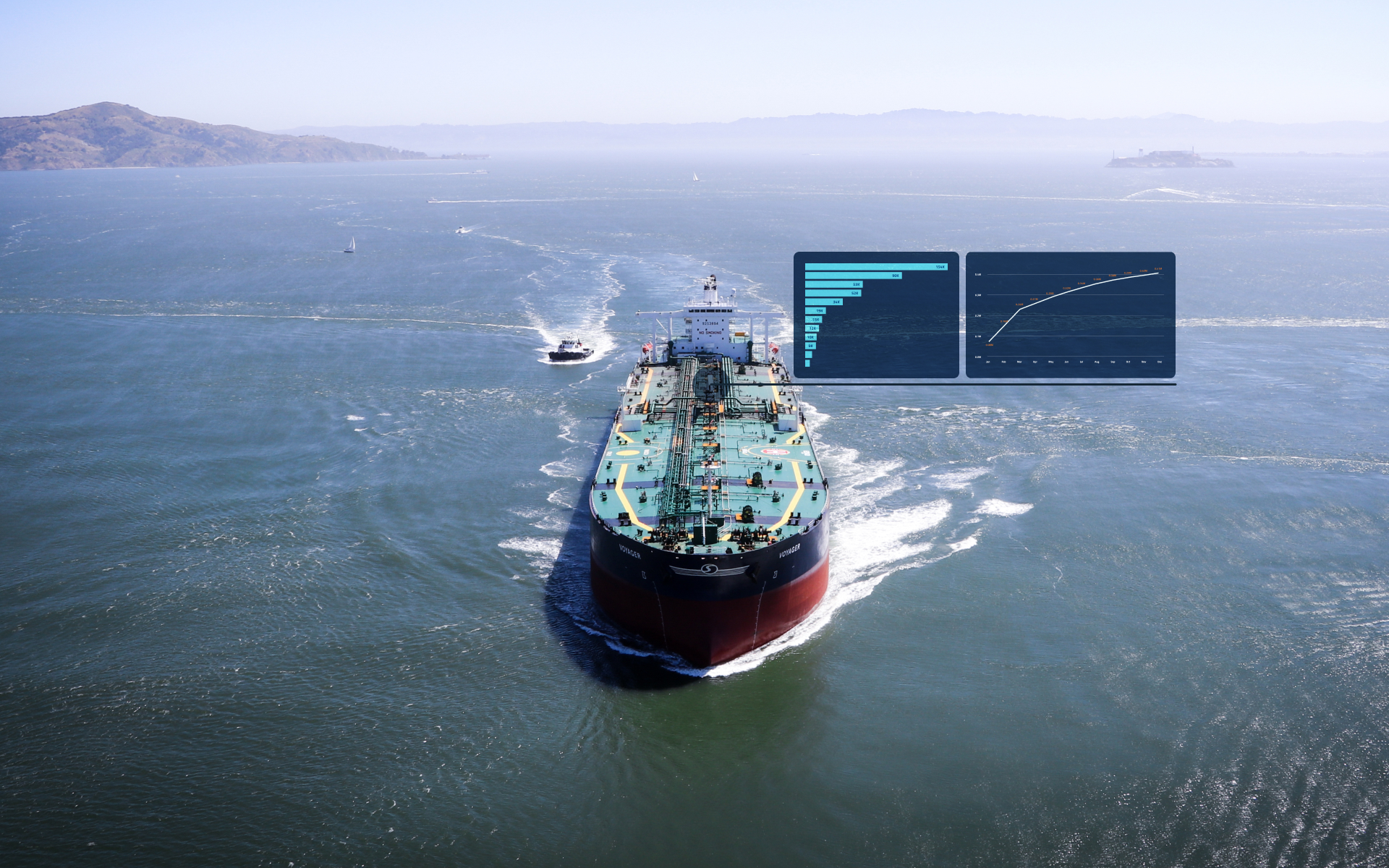In the ever-evolving landscape of maritime transportation, the quest for sustainability has taken centre stage. As the shipping sector grapples with the environmental impact of its operations, two key metrics have emerged in a bid to help monitor, measure, and minimise emissions:
- Carbon Intensity Indicator (CII)
- Energy Efficiency Operational Indicator (EEOI).
In today’s dynamic market, these two measures are serving as universal benchmarks for a vessel’s efficiency and carbon impact. Grasping the nuances between these metrics is becoming ever more crucial for stakeholders in the maritime industry. And as the European Union (EU) introduces ambitious regulations under the EU Emissions Trading System (ETS), the importance increases further still.
What is CII?
In shipping, the term Carbon Intensity Indicator (CII) refers to a metric introduced by the International Maritime Organisation (IMO) to reduce greenhouse gas emissions. CII measures a vessel’s annual operational carbon intensity, expressed as grams of CO₂ per deadweight tonne-nautical mile (gCO₂/dwt-nm).
Unlike metrics based on actual cargo carried, CII evaluates the carbon efficiency of the ship by taking into account the total CO₂ emissions relative to the vessel’s deadweight tonnage and distance travelled over a specific reporting period (typically one year).
CII is graded on a scale from A to E, with A being the most carbon-efficient. A poor rating (D for three consecutive years or E in a single year) requires corrective action to improve performance.
What is EEOI?
The Energy Efficiency Operational Indicator (EEOI) is a voluntary metric introduced by IMO to assess a vessel’s operational energy efficiency, specifically concerning CO₂ emissions per unit of transport work. EEOI is expressed in grams of CO₂ per tonne-nautical mile (gCO₂/tonne-nm).
To calculate EEOI, the total CO₂ emissions are divided by the actual transport work, which is the product of the cargo carried (in tonnes), and the distance travelled (in nautical miles) during a specific voyage or period.
EEOI provides shipowners and operators with insights into how efficiently their vessels convert fuel into transport work, allowing them to monitor performance and identify opportunities to reduce fuel consumption and emissions.
CII vs. EEOI – what is the difference?
Although both CII and EEOI focus on carbon emissions and energy efficiency, they differ significantly in scope, calculation, and purpose:
CII measures a ship’s overall carbon intensity relative to its deadweight tonnage and distance travelled over a reporting period. It reflects regulatory compliance and grades the ship’s annual performance.
EEOI focuses on the vessel’s actual operational energy efficiency, considering the actual cargo carried and the distance travelled. It is primarily used as an internal monitoring tool to track and improve operational efficiency.
Why do CII and EEOI matter?
As the world increasingly recognises the importance of turning towards sustainable practices, the shipping sector faces growing pressure to adopt cleaner technologies and improve its environmental performance. The significance of CII and EEOI, therefore, lies in their ability to assess and compare the environmental impact of different vessels within the diverse international shipping industry. These metrics enable both shipowners and operators to identify inefficiencies and so implement measures to enhance fuel efficiency, reduce emissions, and ultimately decrease the industry’s carbon footprint.
The role of shipping tech in CII and EEOI
Technological advancements are already playing a central role in improving the CII and EEOI of vessels – and it is expected that tech’s role in bringing about a more sustainable shipping industry will only increase over time.
We are already seeing technology driving efficiency gains in the maritime sector with the introduction of innovative new hull designs and propulsion systems that harness renewable energy. Furthermore, digitalisation and data analytics are also contributing to more sustainable shipping. Software and digital platforms, such as those developed by Sea, are offering accurate, real-time monitoring and optimisation of vessel operations. Sea’s ‘Carbon Accounting and Monitoring’ tool, for example, empowers shipowners to make data-driven chartering decisions by offering a digital solution that tracks, validates, and records maritime carbon emissions.
What impact will the upcoming EU ETS regulations have?
In 2005, the European Union Emissions Trading System (EU ETS) was introduced – the first international emissions trading scheme in the world. This major policy initiative was aimed at reducing greenhouse gas emissions within the European Union in a bid to tackle global climate change.
The EU ETS applies to specific industries and operates as a cap-and-trade system. In simple terms, this means that for entities covered by the system, there’s a limit (cap) on the total amount of greenhouse gases they can emit. Companies within the system are then allocated allowances (they can also buy additional allowances), which permit them to emit a specific amount of CO2.
January 2024 saw a new phase for the EU ETS scheme as it extended its carbon pricing mechanism to also cover the maritime industry. Naturally, this will have a profound impact on shipping: with shipowners now required to purchase emission allowances for their vessels, there will be a new – and significant – financial incentive to improve CII and EEOI and remain compliant with the regulation.
The need to embrace change
As the shipping industry sets sail towards a more sustainable future, understanding CII, EEOI, and the differences between two, is essential. Not only do these metrics offer valuable insights into a vessel’s environmental impact, they also serve as benchmarks for improvement. With the introduction of EU ETS regulations for the shipping industry in January 2024, the adoption of cleaner technologies and enhanced operational efficiency is even more important for shipowners if they are to keep pace with the evolution towards more sustainable shipping. Embracing these changes not only aligns with global environmental goals but also positions the shipping industry as a key player in the broader effort to combat climate change.
Sea’s Carbon Exposure provides the industry with ways to manage costs and reduce carbon emissions at the pre-fixture stage of the chartering workflow. Learn more about this solution and ways to reduce your carbon output here.
Share this article
Don’t miss the latest news and insights - subscribe to our newsletter
For press enquiries, please email news@sea.live
